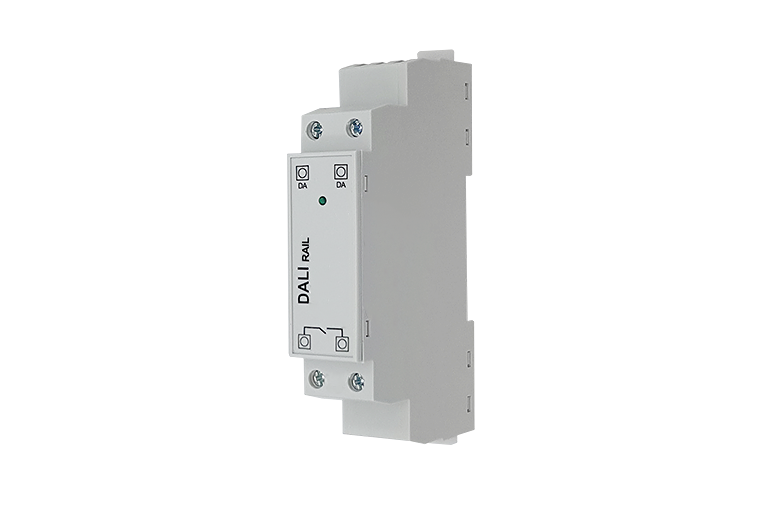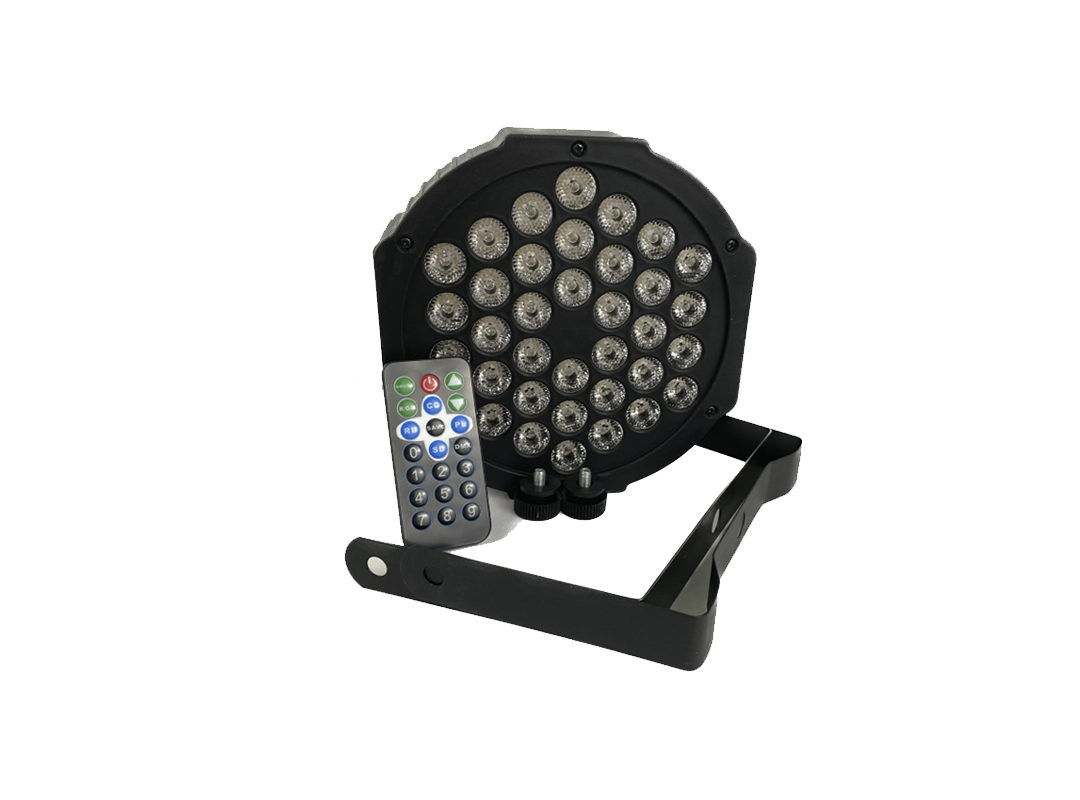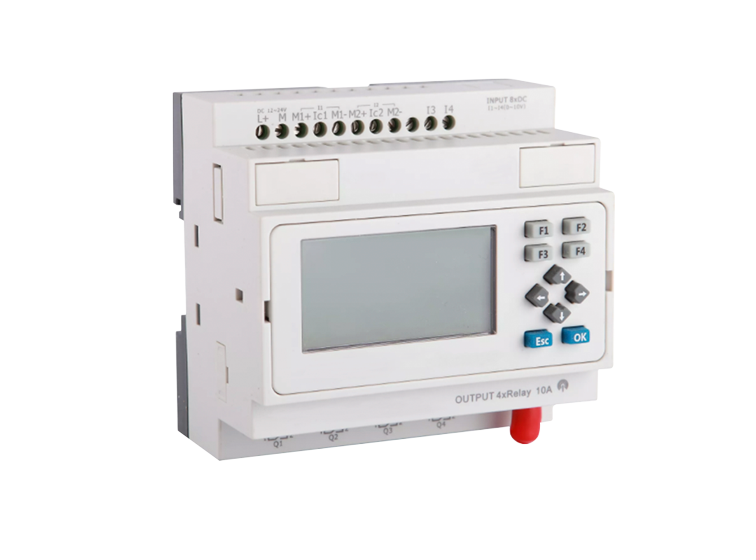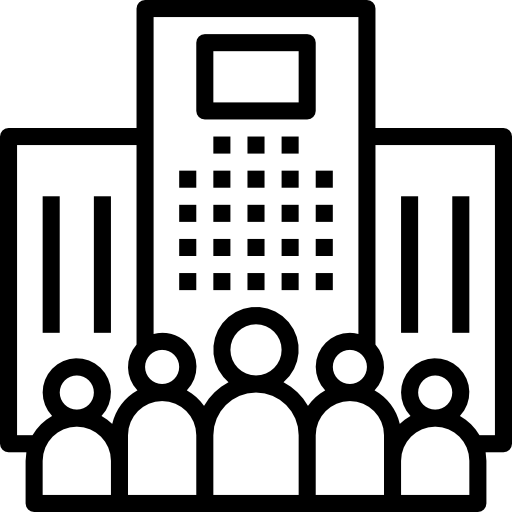- Protocol translators
- IP converters
- BacNet building controllers
- Sensors
- Gateways
- Third-party routers
- Chillers
- Door control units
- Third-party interfaces
- BacNet HVAC controllers

Building Automation
We design for our clients smart building automation solutions that integrate energy control systems, HVAC, elevators, lighting, building access control, and more. Our team employs robust networks and has access to innovative semiconductor technologies.
We can empower your solution with custom building automation software for controlling energy-efficient automated buildings, establishing smart building energy management, automating processes, and helping you proactively address maintenance needs.
Networks Powering Solutions We Build
Our team develops cutting-edge building automation software, embedded systems, and hardware solutions, leveraging a range of technologies from industry leaders.
Navigating Building Automation: Our Expertise
Building access control
RFID is a contactless system using radio waves to track and identify tags. It consists of tags and readers, with tags transmitting data when exposed to readers' radio waves.
There are two main tag types: low frequency (125 kHz) for building access control systems and high frequency (13.56 MHz) for contactless bank cards and high-security systems.
NFC is a high-frequency RFID-based protocol, and MIFARE is another notable transmission protocol.
Hardware
Passive tags: building access cards, key card entry systems for building, key fobs, bracelets, coins, and stickers.
Active tags: specialised devices, smartphones with peer-to-peer mode (Android, iOS).
Readers: specialised devices, smartphones (Android, iOS).
Vendors
Nordic Semiconductor, NXP, STMicroelectronics, Renesas, Analog Devices, Texas Instruments
Technologies
Android NFC, openHAB
Standards
ISO/IEC 18092, ISO/IEC 14443A/B, ISO/IEC 15693, FeliCa, EMVCo & PBOC, ISO/IEC 18000, ISO/IEC 29143, Rain Alliance, NFC Forum, Open Supervised Device Protocol (OSDP) (IEC 60839-11-5)
HVAC building management systems
HVAC (Heating, Ventilation, and Air Conditioning) encompasses solutions to control indoor environments for thermal comfort and air quality. It can be centralised or decentralised, and advanced technologies like smart thermostats and energy recovery ventilation optimise efficiency and energy savings.
Key components of HVAC building automation systems:
- Furnace
- Heat pump
- Energy recovery ventilation
- Air conditioner
- Air handler
- Ductwork
- Smart thermostat
- Ventilation fans
- Filters
- Dampers
- Evaporator coil
Standards
ASHRAE, The International Mechanical Code (IMC), The International Energy Conservation Code (IECC), ISO16484, and European standards related to HVAC
Protocols
BACnet, Modbus, LonWorks, KNX, Ethernet, RS-485, M-Bus, Profibus, DALI, Zigbee, CAN, OPC
Vendors
STMicroelectronics, Renesas, TI, NXP
Elevators
Elevators are powered by electric motors that use traction cables, counterweight systems, or hydraulic systems to lift the elevator car.
Functions we implement:
- Destination control systems.
- Internet of Things (IoT).
- Light grids & radar/lidar sensors.
- AI for predictive maintenance.
- Real-time insights.
- Safety assurance.
Solutions we build:
- Elevator control modules.
- Elevator sensors.
- Motor drivers.
- Encoders.
- Wireless gateways (3G, LTE, etc.)
- Car.
- Hoistway.
- Machine drive system.
- Gearless, geared, and drum-driving machines.
- Control system (control panels).
- Safety system.
Standarts
For EU: EN 81, EN 81-20:2020, EN 81-50:2020, EN 12016:2013
For the US: A17.1/CSA B44, NFPA 70, NFPA 72, UL67, UL 50
Processors/MCU/FPGA
General-purpose microcontrollers, processors, FPGA can be used
Vendors
NXP, Texas Instruments, Renesas, Analog Devices
Communication Interfaces
CAN, Ethernet, RS-485 GSM-networks (3G/4G/5G), IEEE 802.15.4, others
Building fire alarm
A building fire alarm system is designed to detect fires, transmit signals, and display operational information. It can also control fire protection equipment and electrical systems if needed.
Fire alarm safety systems include smoke, temperature, carbon monoxide, and open flame detection. The primary goal is to identify fires swiftly, alert people to the danger, and prevent property and human losses.
Hardware
Control and indicating equipment (fire alarm control panels).
Smart smoke detectors.
Flame, heat, aspirating, duct, and multi-sensor detectors.
Fire alarm devices (sounders, speakers).
Power supply equipment.
Input/output devices, isolators, and more.
Smart smoke detectors and other devices communication types
Power Line Communication (PLC).
RS-485 data transfer standard over dedicated wires.
Initiating device circuits (IDC).
Signalling line circuits (SLC).
Notification Appliance Circuit (NAC).
Wireless communication
3G/4G/5G, IEEE 802.15.4, 420MHz band, BLE, or Sub-GHz band, and others
Wired communication
Detectors can be connected via two-wire or four-wire topologies. In a four-wire system, separate wires are used, while a two-wire system employs the same wires for power and alarm triggering
Control panel connections
Ethernet (Modbus TCP), RS-485
Processors/MCU
General-purpose microcontrollers and processors
Vendors
STMicroelectronics, Texas Instruments, Renesas, Analog Devices
Standarts
EU: EN54, ISO 7240
The US: UL864 (10th edition), NFPA 72
Lighting control systems
As part of larger building automation systems, cloud-connected lighting control solutions can optimise power consumption and support security and fire alarm systems. We design and interconnect lighting system elements into advanced wired or wireless networks.
Smart building lighting systems consist of the following components:
- Control units: concentrators, routers, servers, and network controllers
- Power supply equipment to source all parts
- Lighting devices
- LED drivers
- Manual and automated switches, dimmers
- Lighting and occupancy sensors
- Installed control network
- User interface panels
- Configuration and monitoring software
Technologies
Wired communication: BACnet, LonWorks, DALI, KNX (EIB)
Wireless communication: IEEE 802.15.4, 420MHz band, Bluetooth, BLE, Zigbee, Z-wave, EnOcean, KNX RF, LonWorks-based special chipsets: neuron chips, DM512, sACN, Casambi
Standarts
ISO 16484-5 BACnet
ISO/IEC 14908 – LonWorks
IEC 62386 – DALI 2
IEC 14543 – KNX
Vendors
TI
Echelon
Renesas
ST
Water leak detection and drip irrigation systems
Leak Detection Systems (LDS) aid in pinpointing pipeline leaks, offering alerts and data for efficient decision-making, ultimately enhancing pipeline reliability. Leakage controllers are required in pumping stations and boiler rooms.
Drip irrigation systems deliver water directly to crop roots, optimising efficiency and minimising waste. By utilising networks of pipes, hoses, and emitters, drip irrigation proves advantageous for high-value crops. This method necessitates more frequent irrigation compared to sprinkler systems.
These systems can be linked to smartphones through cloud connectivity, enabling control and monitoring.
The elements of leak detection and irrigation systems:
- Controlling and indicating equipment
- Communication equipment
- Valves
- Build-in buzzer
- Temperature metre
- Pumps
- Wire/connectors
Additionally, we integrate rain and soil moisture sensors into the irrigation solutions.
Standards
IEC 60364, IEC 60335, IEC 61508, IEC 60364, IEC 60884-1 ED4, IEC 60512, IEC 60533, IEC 60534, IEC 60670
Vendors
STMicroelectronics, Texas Instruments, Renesas, Analog Devices, Nordic Semiconductor, Espressif, Spectrum Technologies, Delmhorst
Technologies
Wired Communication: RS-485, nRF52 series, Ethernet (Modbus TCP)
Wireless Communication: Bluetooth, Bluetooth Low Energy (BLE), Zigbee, WiFi, 3G/4G/5G, IEEE 802.15.4, 420MHz band, Sub-GHz band
Smart building Energy Management System (EMS)
Smart building energy management systems benefit both industrial and private sectors by elevating productivity and delivering at least 10% savings through:
- energy and cost optimisation,
- loss reduction,
- load distribution,
- adaptability to variable factors like interval tariffs and weather conditions.
EMS cater to various sectors:
- Commercial Energy Management Systems (CEMS)
- Facility Energy Management Systems (FEMS)
- Building Energy Management Systems (BEMS)
- Home Energy Management Systems (HEMS)
We incorporate self-learning and adaptive algorithms into energy analytics to ensure their effectiveness amidst shifting conditions like weather, tariffs, and equipment load. The outcomes presented in ISO 50001-compliant reports enable weaknesses identification and unnecessary cost elimination.
Key Components of EMS
Data Collection: Temperature and humidity sensors | Water/gas/electricity flow sensors | Smoke and fire detectors | Building Automation System (BAS)
Energy Storage: Battery charge controllers
Communication protocols
Wired: BacNET, Profibus, Modbus RTU/TCP, IEC 60870-5, IEC 61850, EtherCAT, CAN, Ethernet/IP, SNMP
Wireless: Openthread, Matter, ZigBee, Bluetooth, WiFi
Data Analytics and Storage Center
Alternative Energy Sources:
Solar panels | Wind turbines
Control: Lighting | HVAC | Water heating controllers
Building Automation Software
These are the vital components of building automation software, working together to create a robust and responsive system for managing building functionality.
Configuration software
It enables the initial setup and customisation of the system.
Configuration software is responsible for:
– Device integration
– System customisation
– Programming logic
– User interface design
– Troubleshooting and diagnostics
Management software
Mobile and desktop management software is designed to help you oversee and optimise system operations and performance.
Its primary functions include:
– Centralised monitoring
– Data analytics
– Alarm and event handling
– Energy management
– Reporting and insights
Our Tech Stack in Building Automation Software
Backend
Python, JavaScript; Node, Express, Next, Django
Frontend
JavaScript, TypeScript, Dart; React, Flutter
Databases
PostgreSQL, MySQL, MongoDB
Cloud infrastructure
AWS, Azure
Our Case Studies
Smart thermostats: seamless integration and customisation
We have reviewed and analysed the available solutions from Chinese factories, and selected a smart thermostat that is now set for integration into the customer's system.
Key tasks included:
- updating the mobile app for localised control, branding, and tailored parameter displays,
- restricting manual adjustments to administrators, ensuring controlled maximum values,
- supplying up to 5000 custom-designed controllers (thermostats) to meet specific requirements.
For more insights, explore our case study

DALI relay module: robust lighting control with non-dimmable ballasts
Discover how our cutting-edge DALI relay module effectively integrates non-dimmable ballasts into smart building lighting systems, providing precise and efficient illumination management and control.
By leveraging advanced DALI technology, our solution offers seamless integration, enabling enhanced flexibility and control over lighting environments.
For more insights, explore our case study.

DMX-512 receiver
Our team successfully implemented a DMX receiver, including firmware, the board's schematic and layout.
Utilising the STM32F401 for deployment, we implemented a functional DMX-512 protocol for firmware configuring all peripherals.
Our solution is compatible with any DMX-512 transmitter, regardless of the transmitted byte count. It includes support for timer, USART, PWM control, NVIC, and GPIO and is complemented by the BSP and HAL for streamlined development.

Building fire alarm system
We designed a set of hardware and software modules for a building fire alarm system.
Key features of the software software for the NXP i.MX6 UL processor:
- Buildroot 2015.11,
- Linux Kernel 4.1.15
- U-Boot 2015.04
- QtCreator 5.7
- Qt Framework 5.5.0
- Embedded Linux + NXP i.MX6 UL

Water leak controller
We upgraded the schematic and PCB designs, updated firmware, and implemented new features for the STM32F407 MCU.
Key firmware features:
- СMSIS RTOS 2/FreeRTOS, Tracealyzer
- Supported OTA (firmware update)
- uGFX- lightweight embedded GUI library
- New business logic functionalities redesigned from C to C++
- SSL/TLS (mbed TLS) support
- LwIP support
- HAL/BSP for WiFi/BT
- MQTT bridging with TLS encryption
- Remote management via web interface
- Revamped business logic for working with water sensors (wired and wireless)

We Work With

Startups
We support startups by offering dedicated engineering teams to tackle specific challenges, bridge resource gaps, and propel their growth.

Enterprises
We provide smart buildings consultancy services and engineer custom end-to-end solutions for mid-sized companies and large enterprises.

Tech Partners
We seamlessly integrate our expertise into your project, crafting smart building automation solutions aligned with your unique objectives.
Why Promwad

In-depth expertise
Our engineers have extensive experience working with cutting-edge networks such as KNX, BacNet, DALI, LonWorks, and other industry-leading protocols, ensuring our clients benefit from the latest advancements and a holistic approach to design.

Reliable partnerships
At Promwad, we collaborate with renowned chip vendors, including NXP, Texas Instruments, Analog Devices, STMicroelectronics, Renesas, and TI. It grants us access to the latest semiconductor technologies, allowing us to implement robust solutions.

Faster development
We provide rapid deployment and seamless team onboarding from the initial setup stages to ensure a quick start. Throughout the development process, we leverage automated updates and streamlined workflows to enhance efficiency.
Our Cooperation Models
Flexible approach to suit your current needs

Dedicated Team
We will form a team to fit your specific engineering task. You are free to manage it and provide additional resources.

Project-Based
We can join you at any stage or take on the entire project, including our management and risk control.

Fixed Price Model
This contract fixes the price so that it does not depend on resources used or time expended by our engineering team.

Time and Material
A T&M contract is the best option for your flexible set of tasks that are difficult or impossible to fix and assess in advance.
Do You Need a Quote for Smart Building Automation Systems Development?
Drop us a line about your project! We will contact you today or the next business day. All submitted information will be kept confidential.
FAQ
Can you develop a building access system within your services?
Yes, we develop comprehensive building access systems as part of our automation services. Whether it's biometric authentication, key card entry systems for buildings, RFID- and NFC-based solutions, or smart device integration, our team can create a customised access system that enhances security, convenience, and efficiency within your building environment.
From concept to implementation and ongoing support, our goal is to provide you with tailor-made building access systems that enhance security, convenience, and efficiency within your building environment.
What can be achieved through KNX software development?
KNX software development empowers the creation of customised intelligent building automation solutions. It enables seamless integration and control of various lighting, HVAC, security, and other systems. You can achieve enhanced energy efficiency, comfort, and convenience by tailoring automation scenarios to the specific needs of your building.
With KNX-embedded design technologies, we also build custom lighting control solutions. Our team creates KNX lighting systems that enable precise management, dynamic adjustments, scheduling, and energy optimisation.
Additionally, we provide KNX hardware design services that align with the unique requirements of your building's environment.
How do BACnet embedded services enhance building automation?
BACnet embedded services bring higher interoperability and efficiency to building automation systems. These services allow devices to communicate directly using the standardised BACnet protocol, ensuring smooth data exchange between diverse equipment. This enhances building systems' overall functionality and coordination, leading to streamlined operations and improved automation performance.
Can BACnet hardware design services be customised for specific needs?
BACnet hardware design services can be tailored to match the unique requirements of your project. Whether it's designing devices for particular functionalities, optimising communication protocols, or integrating specialised features, we build custom solutions that ensure optimal performance and seamless integration within your building automation network.
Are DALI hardware design services suitable for various building types?
DALI hardware design services are versatile and applicable to multiple building types. Whether your project is for residential, commercial, industrial, or even specialised environments, we tailor our development services to provide precise and dynamic lighting solutions that cater to your unique needs and aesthetic requirements.
Is DALI software development scalable for different projects?
DALI software development is highly adaptable to different project sizes and complexities. We can build smart building lighting systems for a simple single room or a large commercial building.
DALI solutions can be tailored to match any scope and requirements. This scalability ensures that your lighting control remains efficient and effective, regardless of your project scale.
